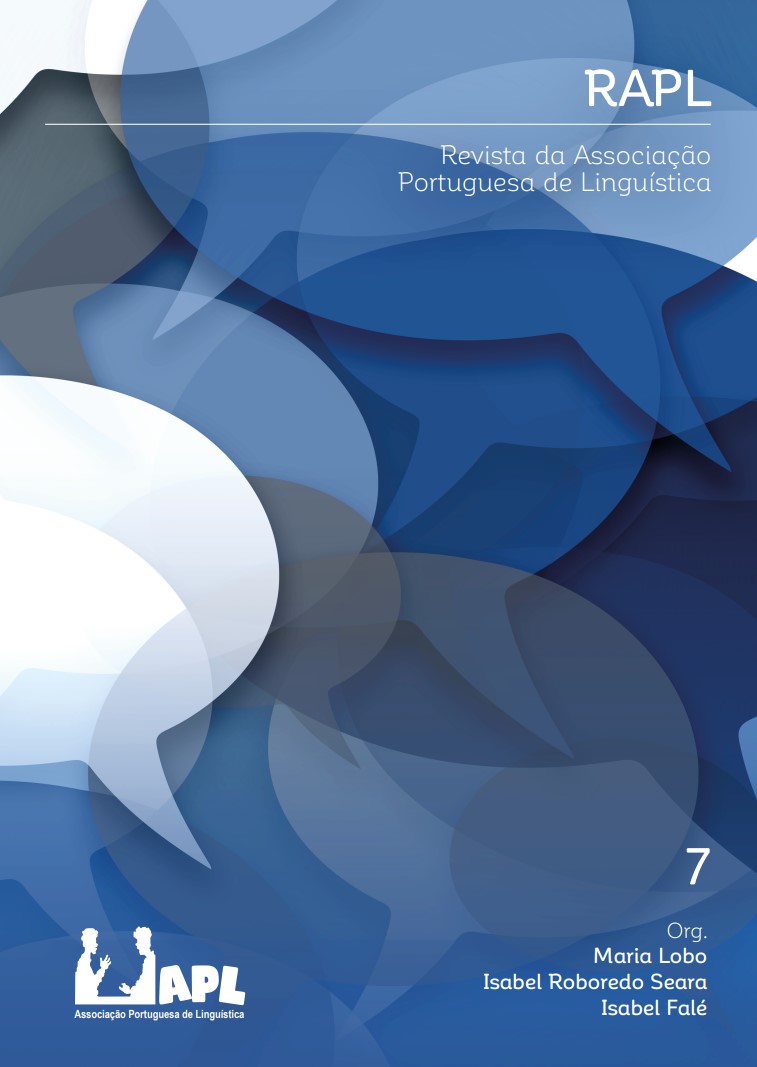Heterosyllabic regressive nasalization (HRN) of the stressed vowel /a/ in EP
DOI:
https://doi.org/10.26334/2183-9077/rapln7ano2020a18Keywords:
NRH, Portuguese dialects, dialectal maps, phonetic modifications, phonological analysisAbstract
According to the autosegmental model adopted by Mateus & Andrade (2000), the nasal vowel in Portuguese, in words such as cinco, lã and campo, is a phonetic form derived from a phonological oral vowel plus a nasal autosegment N in the same syllable. However, we can also notice the nasalization in words such as cãma, cẽna and cũnha in Portuguese, although not often in the standard language. This phenomenon is an heterosyllabic regressive nasalization (NRH), in which the nasal consonant of the onset nasalizes the previous vowel. In Brazilian Portuguese, there are more studies related to NRH than in European Portuguese and most of them treat it as a phonetic phenomenon (Câmara Jr., 1970; Battisti, 1997; Botelho, 2007). Moraes & Wetzels (1992) find NRH more frequently in the stressed syllable and with the palatal consonant /ɲ/, but its frequency varies in different dialects. Therefore, this paper aims to analyze the variation of NRH in Mainland Portugal and the phonological processes that go together with it, focusing particularly on the structure /a/[+ac] .C[+nas] (/m/, /n/, /ɲ/). We collected occurrences that contain the target structure from the corpus Linguistic-Ethnographic Atlas of Portugal and Galicia and our analysis is based on the phonetic transcriptions performed by CLUL dialectologists. By calculating the percentage of NRH in each locality and making dialectal maps, the results show that: i) NRH can be found almost throughout the entire territory; ii) it has a greater frequency in Northwest (mainly with the consonant /ɲ/), Beira Baixa, Alentejo, and Algarve; iii) multiple phenomena transform the phonological segments into different phonetic shapes; iv) in a diachronic analysis, the changing path of /a/ in Portuguese in this structure is: [a] → [ã] → [ɐ̃]→ [ɐ], which shows that the elevation of /a/ follows the NRH. Dialects, then, choose between one of these phonetic variants.
Downloads
Downloads
Published
How to Cite
Issue
Section
License
Copyright (c) 2020 Shanyi Lao, Celeste Rodrigues, Fernando Brissos

This work is licensed under a Creative Commons Attribution-NonCommercial-ShareAlike 4.0 International License.
Authors retain copyright and concede to the journal the right of first publication. The articles are simultaneously licensed under the Creative Commons Attribution License, which allows sharing of the work with an acknowledgement of authorship and initial publication in this journal.
The authors have permission to make the version of the text published in RAPL available in institutional repositories or other platforms for the distribution of academic papers (e.g., ResearchGate).




